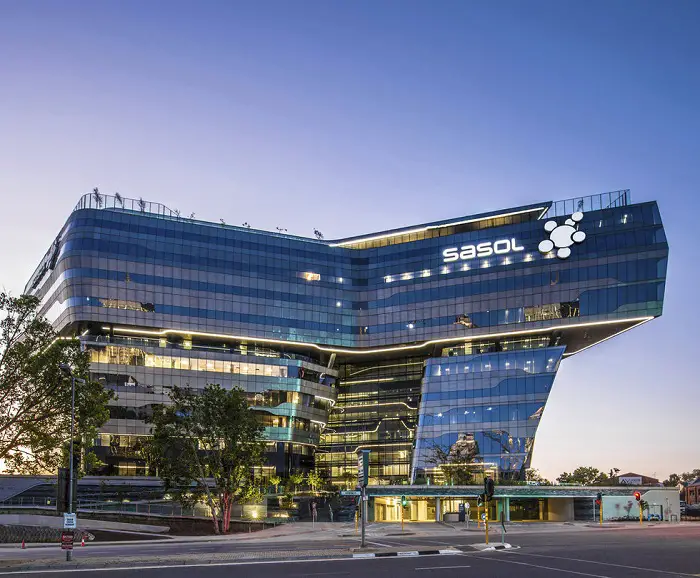Leading architecture, interior design, and space-planning practice Paragon of Sandton, Johannesburg celebrates 20 years of design excellence this year. The company was established in October 1997 by Founding Directors Anthony Orelowitz and Henning Rasmuss.
Since then, Paragon has grown into one of the largest design practices on the continent. “The fantastic range of talented and curious people we have worked with since our inception continues to amaze us. There is continuous growth. Nurturing this talent, and giving it space to grow, is one of our achievements we are proudest of,” Orelowitz comments.
Director Claire D’Adorante secured two of the largest fit-out projects in South Africa, namely the new Sasol Place, completed in January 2017 (67 000 m2), and the new Discovery Campus, completed in October 2017 (110 000 m2). Co-Director Thulani Sibande has a particular interest in efficient site and project management, with a personal design philosophy centred on the comfort and functionality of buildings.
An example of Paragon’s ongoing innovation is its in-house software training program, developed in conjunction with Modena Consulting, and run successfully for the past six years. This is based mostly on project- and task-specific training in the adoption of best practice methods using Autodesk REVIT, the practice’s main design and production software.
More recently, Paragon has compiled a team to champion core areas of excellence such as innovation, sustainability, Building Information Modelling (BIM), compliance, and technical documentation. Over the past year, the practice has contracted in training programmes to promote team autonomy, process management, and key business-skills training.
“In addition, we encourage the registration of staff members with the South African Council for the Architectural Profession (SACAP), and we hold in-house Continuing Professional Development (CPD) training sessions from time to time,” Rasmuss points out.
Orelowitz highlights that 3D modelling and BIM have allowed Paragon to improve communications with contractors, consultants, and clients, and to achieve better consensus on design decisions. In some work processes, the link between architect and manufacturer is now much more direct, cutting out steps such as shop drawings.
“The sculptural quality of the buildings we design is also heavily reliant on 3D modelling, allowing us to now draw exactly what can be imagined,” Orelowitz points out. Paragon is also positioned uniquely to exploit the synergy between interior design and architecture.
“Wherever possible, we work to secure the interior architecture appointment alongside, or in addition to, the architecture projects we carry out. There are obvious synergies in the design process, as well as in service coordination, that result in improved overall design quality, and an integrity and continuity of idea, line, and colour that would not occur where the interiors had been designed by others,” Rasmuss stresses. Paragon has also implemented the Deltek Vision ERP system to allow for management control and insight.
Paragon Group awards
A slew of awards have cemented the Paragon Group’s position as a preeminent design practice in Africa, including its consistent recognition since 2006 at the annual South African Property Owners’ Association (SAPOA) Awards for Innovative Excellence in Property Development. It was also involved with the FIFA Soccer World Cup in 2010 and 2014, namely the Cape Town stadium in South Africa and the Belo Horizonte stadium in Brazil.
“We innovate constantly in the way we understand and manipulate materials, and each project has building technology innovations embedded into it that are driven by a single-minded focus. On the interior design side, we are interested in the different forms of new ways of working, as companies and technologies are changing at a faster rate.
“It is amazing to think that we design buildings for, say, a 30-year lifespan and a 12-year lease, when companies change the way they work every four to five years at present. Of course, we also work in many parts of Africa, taking our best knowledge and adapting it for fundamentally different conditions,” Orelowitz elaborates.
Looking at the current state of the market, Rasmuss reveals that while Paragon does not necessarily see a slowdown, “we do see a large number of smaller projects. This is a sign of a lack of confidence in the market, and the reality of tough trading conditions. There is more aggression and litigation in the industry, while payment terms and fees are harder to negotiate and agree to.”
Orelowitz adds that the biggest opportunity at present is “the resurge in development energy in continental Africa, following the squeeze brought about by long-term low oil prices. There is a realism in African projects at last, now that the ‘easy’ oil money has stopped flowing, making African economies realise that funds have to be generated and cannot just be pumped out of the ground,” he concludes.
About the Paragon Group
Paragon, established in October 1997, is an internationally-active African design business, based in Johannesburg. It delivers commercial architecture, masterplanning, interior design, and space planning to visionary clients in all property sectors.
We are committed to Africa, and believe in the future of its cities. Our roots are here. We have much to offer. We are able and agile, and actively participate in the continent’s urban and human development. Paragon is flexible and diverse in its approach to design. Each project is unique and not driven by style, but by lifestyle and a response to user needs. Elegant and efficient planning form the core of our designs. We understand the needs of our clients, and know how to generate ever new architectural forms in a competitive property market.
We are known for hands-on engagement with all opportunities present in the modern global building industry. The true measure of our skill is our ability to engage at all levels and with all players that make up the colourful world of construction and property development. Our buildings look forward. We embrace the future, because we will be a part of it – part of its problems and responsibilities, and part of its great freedoms and achievements.

